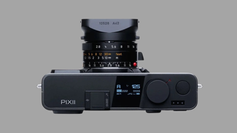Samsung’s Nanoprism Sensor Technology
- The Magazine For Photographers

- Jul 21
- 1 min read

Samsung has pulled back the curtain on its new “nanoprism” sensor tech, a tiny optical redesign that promises to improve smartphone camera performance by capturing more light. In a blog post, the company explained that this approach tackles a major issue in mobile photography: shrinking pixel sizes. As phone makers chase higher resolutions without increasing camera size, pixels get smaller, and collecting light becomes harder. Less light means noisier, blurrier low-light photos. While many brands rely on software tricks to compensate, Samsung is betting on hardware innovation.
At the heart of this is the microlens, a tiny lens that sits above each pixel to direct incoming light. In traditional sensors, each microlens lines up with one pixel and its color filter, but light that doesn’t match that color is typically lost. Samsung’s nanoprism design changes that. Instead of using a conventional rounded lens, it places a nanoscale prism-like structure over each pixel. This structure bends and redirects light to the right color channels, meaning less light goes to waste. Samsung says this shift increases light-gathering efficiency and boosts overall sensitivity by 25% compared to previous sensors with the same size and specs.
The new sensors, under the name Isocell JNP, are already in production and have quietly made their way into some upcoming smartphones, though Samsung hasn’t revealed which ones yet. It is also worth noting that Google and Apple are working on new sensor technologies too, which is great news for photographers. Let’s see what the future holds and what new technologies these companies bring to the market!
You can read the blog post on Samsung’s website here










Comments